All3DP sits down with Digital Metal’s Alexander Sakraditis to discuss the company’s high-precision metal 3D printer for small components.
When All3DP first took notice of Digital Metal last month, we were introduced to an impressively precise printer that in some ways seemed too good to be true. But with the advantage of being a subsidiary of the Swedish metal powder pioneer Höganäs, this emerging buzzworthy company has the financial backing and metal powder expertise to disrupt the arguably stagnant metal 3D printing technology.
The company recently unveiled the DM P2500 metal 3D printer. This machine can print with 42 µm layers at 100 cc/hr, and is capable of producing parts with a resolution of 35µm, while also eliminating the need for support structure. From Honeywell Aerospace to an undisclosed global leader in fashion design, Digital Metal is already garnering a reputation across a variety of industries.
At the recent TCT Show in Birmingham, both Digital Metal and Desktop Metal–the other rising star in metal additive manufacturing–came prepared to prove that the hype surrounding their respective technologies was well earned. Unlike Desktop Metal, however, Digital Metal offers a more specialized and niche 3D printing technology; one that is designed to produce small parts with extremely fine details and tolerances.
Read More: TCT Show 2017 Recap: Inside Look at the Most Exciting 3D Printing Show of the Year
During the conference, All3DP had the chance to sit down and chat with Alexander Sakraditis (along with his metal 3D printed Mini-Me), Sales Manager at Digital Metal, to gain more insight about the DM P2500 metal printer, the advantages of their high-precision technology, their future goals, and more.
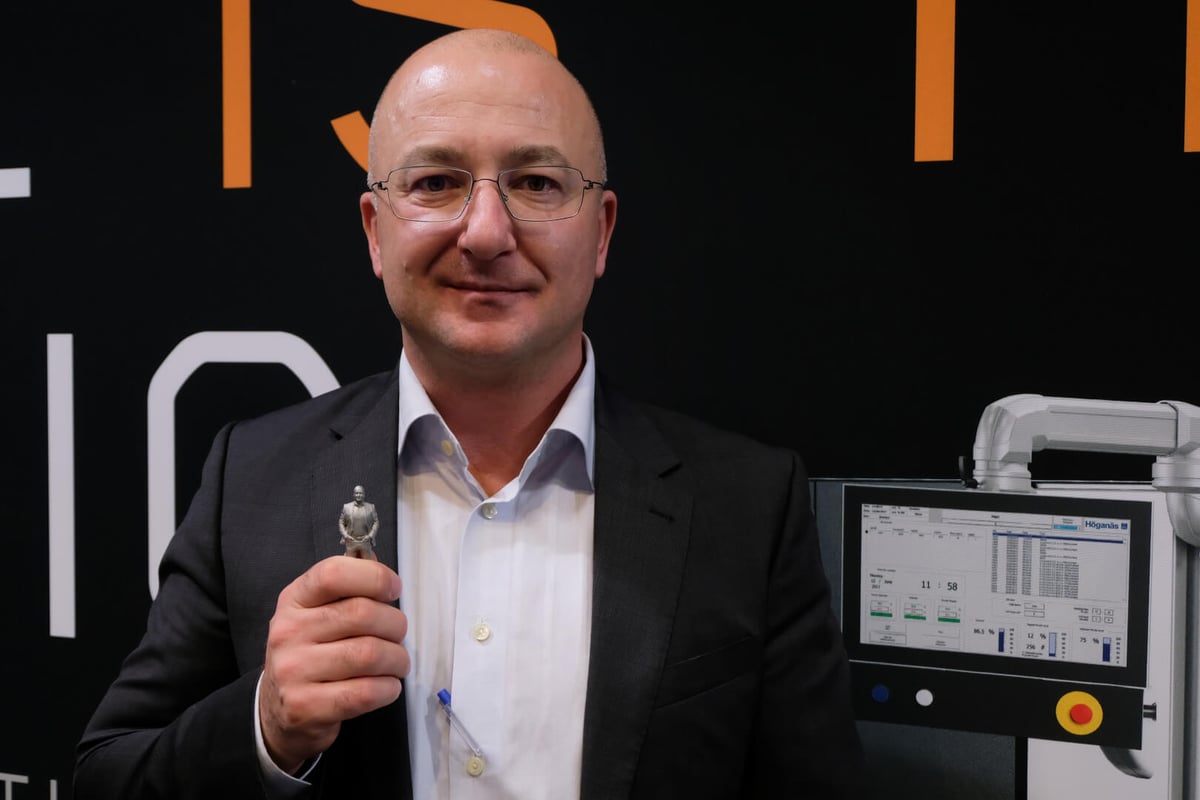
Can you explain how your high-precision metal 3D printing technology works?
Alexander Sakraditis: Our printer is based on high precision jet binding technology. This technology has been around for awhile, but we’ve fine-tuned it a little bit. We tweaked it so that we can reach really fine tolerances. The machine we have built is for industrial use, so it can also reach really high volumes. Productivity is high, and at the same time, the surface roughness it really fine and the details are excellent.
We can do highly complex components with very fine resolution and details. The resolution is 35 microns and the tolerances are excellent. We actually have a dimensional tolerance of +/- 0.5 percent. We also do serial manufacturing for companies, we have companies taking over 25,000 pieces on a regular basis.
One historical issue with metal 3D printing is the difficulty in creating highly accurate and precise parts. How are you able to do this in such a small size?
Well, we provide two different services, one is a prototype job and the other is one-off production. With the prototyping service, we fine tune the machine for the specific geometry. That means we print once, measure it, then we fine tune it and print again.
Then we have a recipe so that we can repeat that process over and over again. It’s a two step process, first we print, then we sinter. With a laser, we melt metal powder, but we don’t melt anything. We print it, we clean out the powder and then we sinter it in the sintering furnace, this is where the shrinkage comes. But this final step is exactly the same as metal injection molding, but this has been around for years, so there’s a lot of knowledge there that we can apply as well.
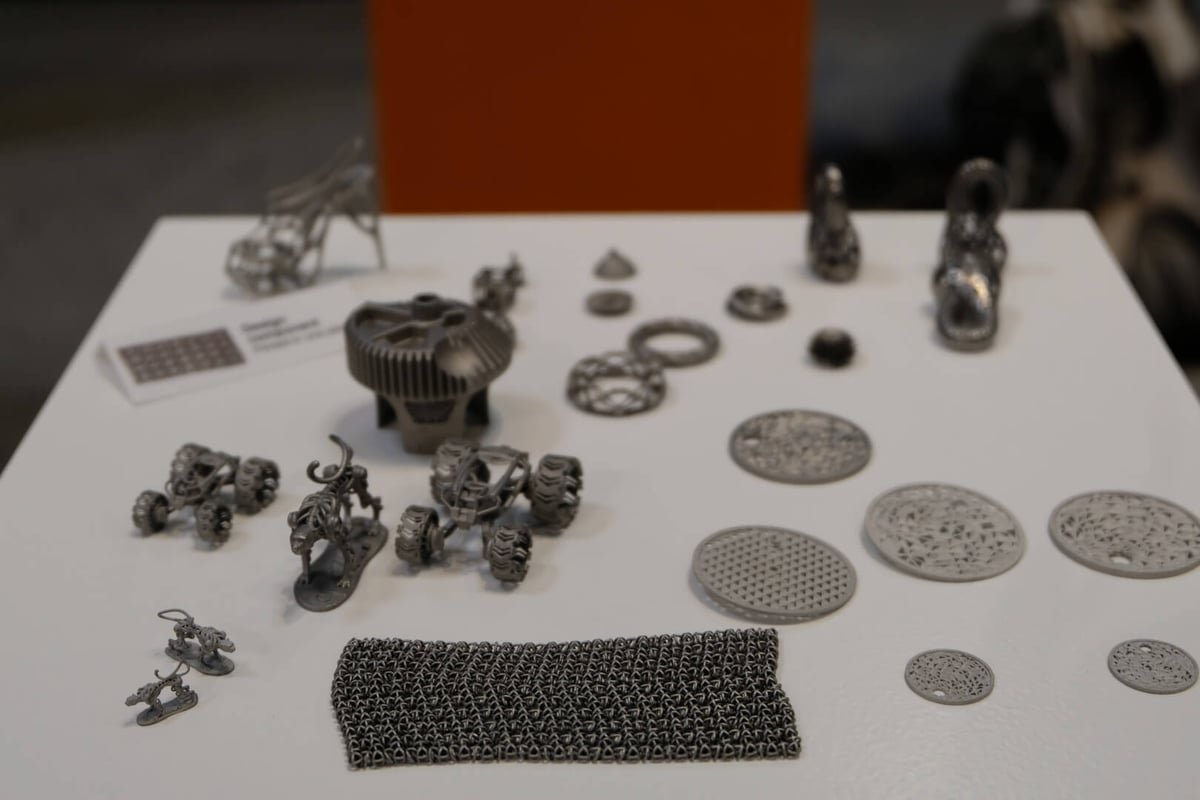
Can you discuss the advantage of having a metal powder pioneer such as Höganäs backing Digital Metal?
Höganäs, the mother company of Digital Metal, knows lots about sintering because that’s been the normal process of PM technology as well. So we have good control of that step, it gives us really fine components.
The process includes binder, powder, and sintering. All of this is what Höganäs has already known since the beginning. They’re a market leader in powder, they produce 500,000 tons of metal powder on a yearly basis, they are very good with binder, since it’s included in their PM technology for automotive use, and sintering is also a natural step for them. So, we have been able to use all of that knowledge and apply it on this system as well.
It’s important to say that this is nothing new to us. We’ve produced more than 200,000 pieces, so it’s not an unproven machine we’re putting on the market. It’s been tested since 2013.
How does this printing system differ from more common metal 3D printing technologies?
Compared to laser, the difference is quite big. We don’t use any support structures when we print, so we can fill the complete build volume with components in all directions. Using laser, you print one layer, then you need to change the build box to print a new layer, you also have support you need to remove. We can print components on top of each other without needing supports, which leads to extremely high productivity when it comes to additive manufacturing. That’s a huge benefit.
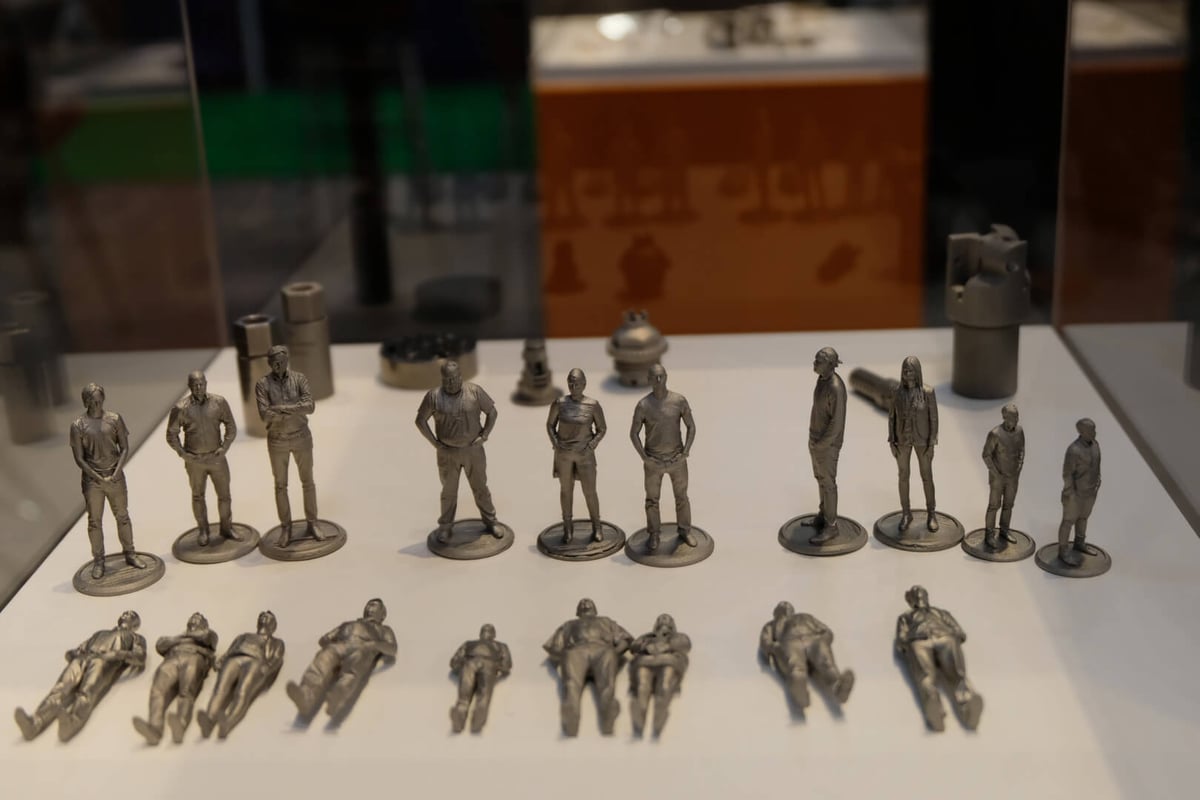
What materials are you currently offering?
We have two different stainless steel alloys. One is 316L, it’s ductile, you have an elongation of 50 percent, meaning you can drag it out up to 50 percent before it breaks. The other, you have an elongation of about 4 to 5 percent, but it’s very hard. We also offer titanium as well. We’re still working on other materials like copper, silver, and others as well. It’s not certified by us yet so we haven’t launched those, but it’s in the works.
What are the industries that Digital Metal is targeting?
We have four main segments; industrial, luxury, medical and dental, and automotive and aerospace. But in general, anyone who has the need of small, complex components with fine details and tolerances is a potential customer. It’s more need based than specific industry. For example, if you need something with internal channels, with a very smooth surface on the inside, it’s ideal to use our technology.
Aside from the Montfort watch dial [which was revealed in the company’s most recent announcement and is pictured below], we work with the Koenigsegg supercar. That car costs around 2 million euros, and we do multiple components for them. That’s in both the luxury segment and also high-end automotive.
There’s also CETIM, which is a French institute that bought our last machine from us, has benchmarked out technology compared to laser melting one company. After running thousands of components and doing calculations, they came to the conclusion that our machine is 5 times as fast, and somewhere between 2 and 3 times more cost efficient.
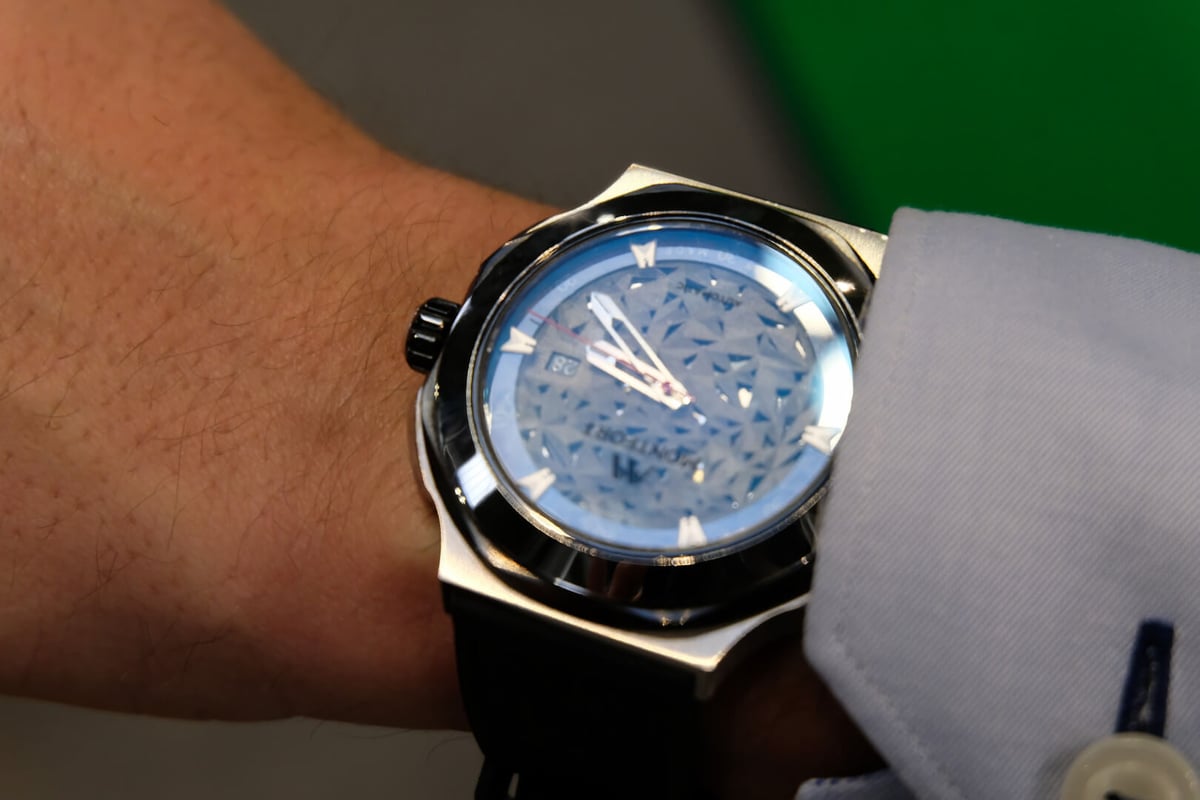
How do you keep your clients educated about how to optimize their experience with the DM P250 3D printer?
Before we deliver the printer to them, they’re invited to us for education for either two or four weeks. We tailor make the education for each one. We do this prior to them getting the machine, that way they can start printing right away. Otherwise, the machine sits there for a month without use. They come to us, they train on the specific machine they’re going to get, and after that, the fine tuning is no problem for them.
What is the future goal for Digital Metal?
The overall aim here is serial production, high volume manufacturing of small, complex, and finely detailed components. The big components, we can’t make, so that we’ll leave that to our other colleagues in the industry who are working with SLM, EBM, and other technologies. But in this segment, as far as I’ve seen, no one can make small components with this accuracy and detail. But I’m sure it will come, someone else will figure it out and make it as well. We will still keep the printing service because we still learn a lot from that and not everyone has the money to buy a machine. But our main focus is selling these machines.
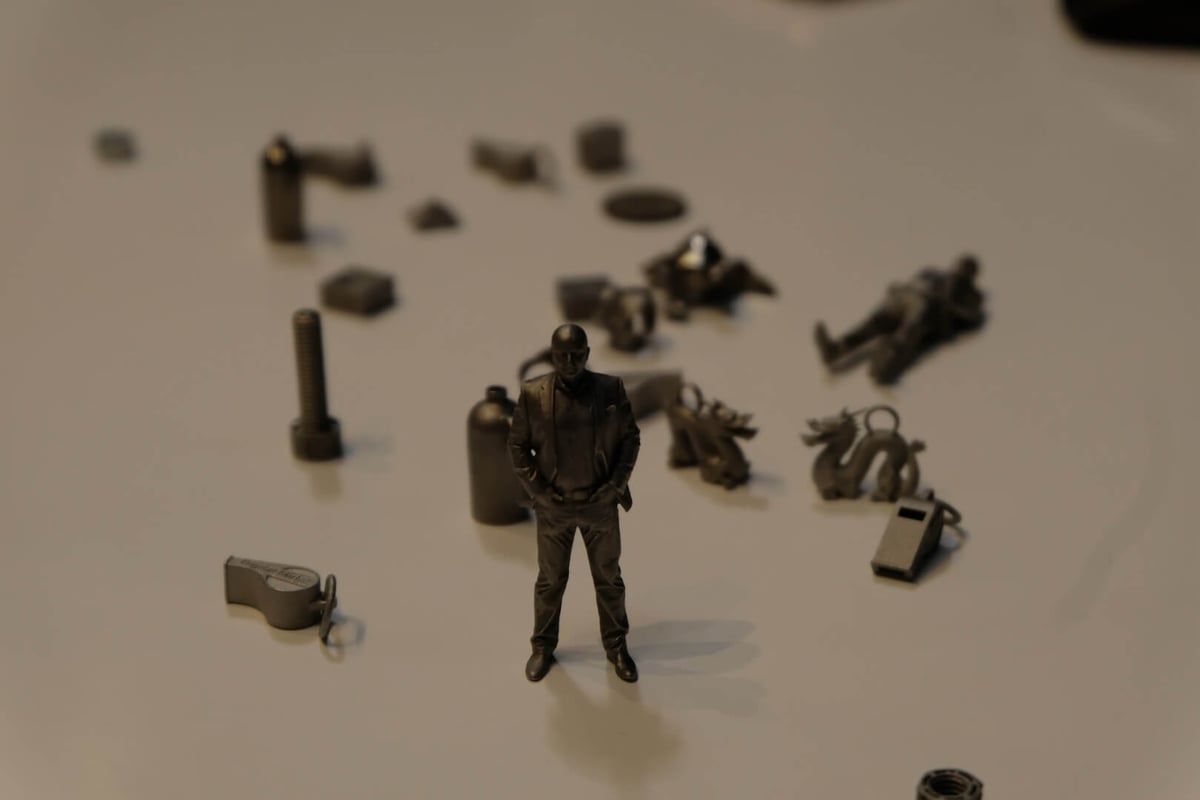
Learn more about Digital Metal and their technology on their website.
License: The text of "Interview With Digital Metal: One Giant Leap For Small Metal 3D Printed Parts" by All3DP is licensed under a Creative Commons Attribution 4.0 International License.